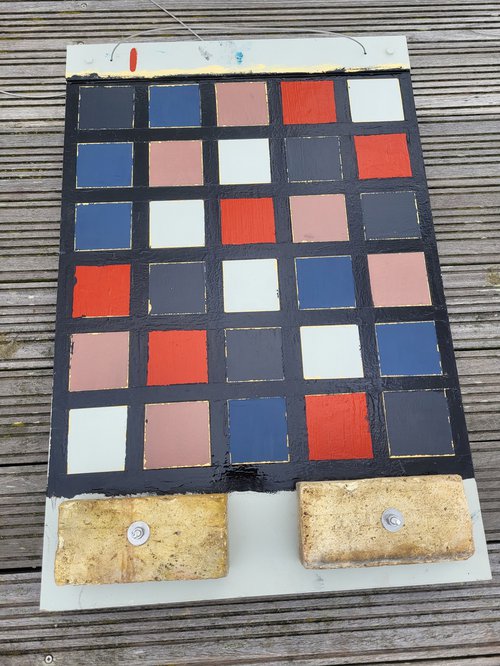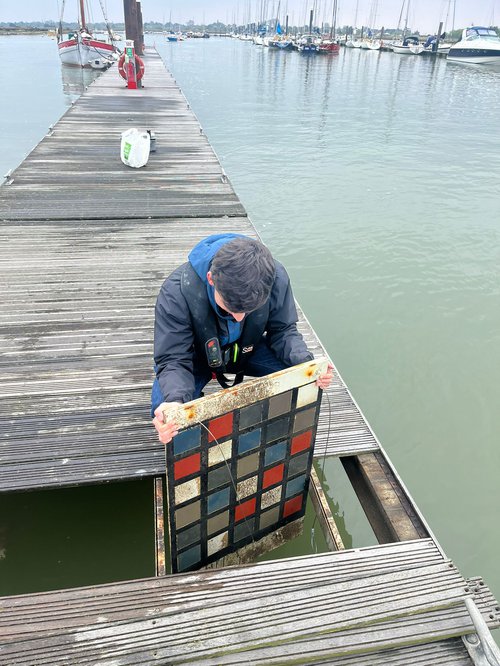Antifouling Panels Deployment
First update from Jacob Cook who is an Essex University PHD student researching the environmental impacts of antifouling biocides in collaboration with Brightlingsea Harbour. Below is Jacob’s update, however download our Visitor Guide & Timetable to learn more about this fascinating project. Visitors - Brightlingsea Harbour
Jacob's update
After a great response to our survey, with 115 responses, we were able to identify the antifouling coatings that Brightlingsea boat owners were most interested in testing. Using this information, four panels have been assembled and deployed in Brightlingsea Harbour on 17th March coated with the following paints:
- Hempel Hard Racing (Biocidal)
- Flag Cruising Antifouling (Biocidal)
- Coppercoat (Biocidal)
- Hempel Silic One (Non-biocidal)
- Hempel Light Primer (Non-biocidal – used as control)
Three of the panels were coated in squares of these antifouling coatings and will be in the water throughout the 2025 and 2026 season. The third panel was painted with long strips of antifouling giving the opportunity to analyse fouling along a depth gradient. Each panel will be exposed to various conditioning:
- Panel 1 – Continuously submerged throughout 2025 and 2026.
- Panel 2 – Submerged throughout 2025 season, cleaned over winter and resubmerged throughout 2026 season.
- Panel 3 – Monthly cleaning throughout 2025 and 2026 season, removed over winter.
- Panel 4 – Continuously left in water.
We will be monitoring and analysing biofouling coverage, comparing fouling species and settlement rates between the coatings.
The first set of data collection was completed on 15th April. At this early stage, there was a small amount of slime settlement but overall relatively clear.
Also, on 3rd of April, we collected sediment from various locations around Brightlingsea. This will be used to analyse the impact of heavy metals released from antifouling paints on local marine communities.



